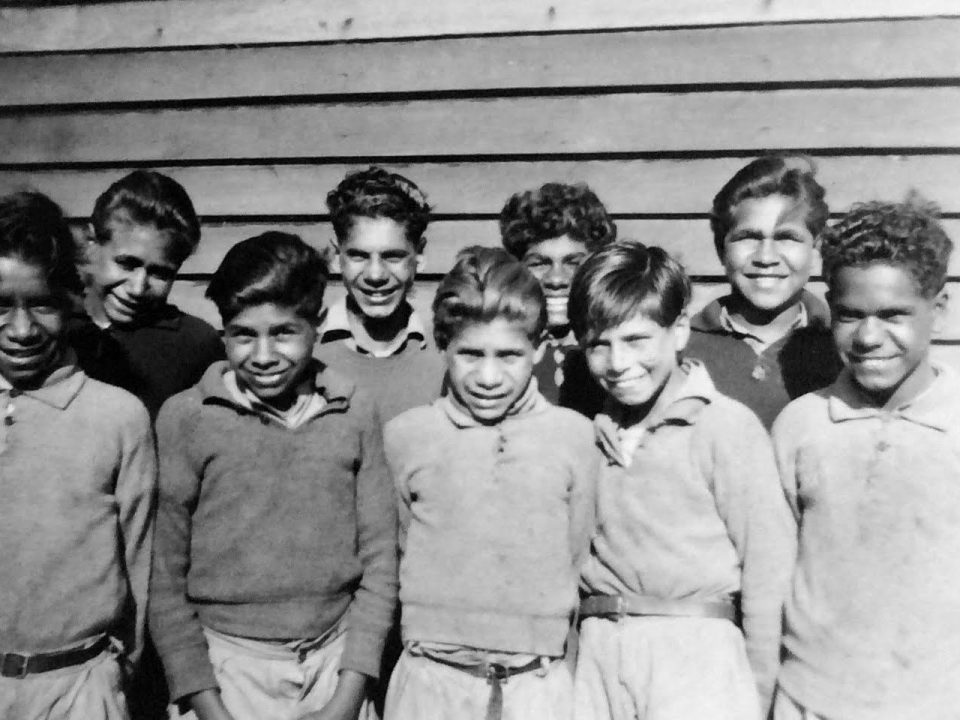Too often, adults in many societies tend to view ‘children’ as ‘immature’, naïve’ or ‘child-like’.
The Carrolup children’s drawings demonstrate an entirely different side to what it is to be a ‘child’. For not only were they part of the Stolen Generation, taken away from their parents, and their brothers, sisters, aunties and uncles, and their friends, but they had to temporarily ‘replace’ their families with an entirely new kind of ‘family’, each other.
The children were traumatised, fearful and isolated from each other. Parnie Dempster told me that the older children, both girls and boys, looked after and comforted the younger children, who were otherwise crying themselves to sleep in their respective dormitories.
Life at Carrolup was tough under the Department of Native Affairs (as it was named at that time), and it was the arrival of Mr and Mrs White at the behest of the existing teacher Mrs Elliot, which dramatically changed the scene.
When Mrs Rutter visited some three years later, she commented specifically on how the older boys at the school appeared to take pleasure in showing the younger ones to draw. She wrote, ‘These Aboriginal children have the real spirit of community life.’ [Emphasis in original] Florence Rutter, Little Black Fingers, 1950, p. 5
Now, the children were performing their art practice with an expectant audience in mind, e.g at the annual Katanning Show.
And it was through the emergence and development of the child art at Carrolup that presented the artists with an opportunity to address the world on their own terms.
‘I think it [the Carrolup art] is vitally important because it captures a historic instant where Aboriginal children, not adults but Aboriginal children, could assert themselves and their position in society within their landscape of the South West.
‘They did it unequivocally, they did it seriously, they did it thoughtfully, and they were fully understanding of what they were doing at the time… It was a unique thing.
‘There has never been a case anywhere else, I believe, in the world where children have actually taken responsibility for asserting themselves and their place in society, and their place in their country in a colonial environment.’ John Stanton interview
![Dancing figures by Reynold Hart, pastel on paper, 29 x 38cm, 1949. Stan, Melvie and Gael Phillips Collection, Berndt Museum of Anthropology. [WU7316]](https://www.carrolup.info/wp-content/uploads/2018/10/WU23NL2.jpg)
Dancing figures by Reynold Hart, pastel on paper, 29 x 38cm, 1949. Melvie, Stan and Gael Phillips Collection, Berndt Museum of Anthropology, The University of Western Australia. [WU7316]


